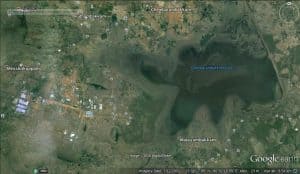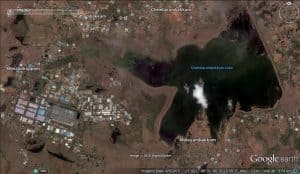It will perhaps be a long time before Chennai can witness any spell of heavy rain without getting jitters over the nightmarish memory of December 2015. The 2015 floods that devastated the city exposed the state of urban planning in the city. The lack of resilience to natural disasters remains one of the greatest concerns of the people of one of India’s largest cities.
What should be noted is that certain parts of Chennai experienced greater flooding than others and this impacted rescue and relief efforts. Poor urban planning, coupled with an expanding population that requires more space, leads to the city’s marshlands being encroached and green light for unauthorised construction.
Flooding in other parts of the country such as Maharashtra and Kerala for example, are also commonplace now. No city can be 100% prepared for something as unpredictable as the vagaries of nature, but can smart infrastructure help? It certainly will need to if the overall goal of a smart city is to be met, and Chennai is on the journey towards attaining such status.
The Chennai Smart City Mission shouldn’t restrict itself to making the city more livable, it also has to make it resilient. The National Disaster Management Act (NDMA) of 2005 has made it mandatory for cities to develop disaster management plans, emphasising four key aspects in particular – mitigation, preparedness, response and recovery.
Marshlands speak of mitigation failure
Chennai has a history of growing at a steady rate in terms of population, transportation networks and construction. Take a couple of examples of existing structures: the airport is constructed on the banks of the Adyar river. The 2015 rains flooded the airport runways as the natural flow of the Adyar river was blocked. One of the largest bus terminuses in the continent – the Chennai Mofussil Bus Terminus (CMBT) at Koyambedu, is also a flood prone area.
Besides the above, much of the urban poor reside in environmentally hazardous areas. As Armaan Ranjani Mustafa, Researcher – Urban Governance, Citizen Consumer and Civic Action Group puts it –
“It is common to see the urban poor in slums encroaching low lying areas, rivers, and tanks. Objectionable slums are moved to low lying resettlement colonies along Chennai’s peripheries. Other affluent encroachers in the state, such as hotels and malls, are exempted because they suited Chennai’s vision of a prime metropolis” (sic).
Move outside the city limits and we have a host of engineering colleges and IT companies constructed on waterbodies and marshlands. Many automobile and telecom SEZs are built on catchments. A few examples again: Hyundai motors has a factory near the Chembarambakkam lake and SIPCOT is located at a point where the Kovalam creek drains. Jayshree Venkatecan, from Care Earth stated in a 2015 interview that marshlands in the outskirts have shrunk, “these are now part of the IT corridor,”’ she said, sentiments echoed by writer and environmental activist Nityanand Jayaraman, who explained, in a 2015 column, how poor urban planning led to a vast reduction in marshlands.
These images show how in Chembarambakkam, various industries have populated hydrologically sensitive catchment areas with their factories.
A 2016 government report highlighted the level of illegal construction in the city. In particular, the report noted – “In the banks of the Adyar River, 4046 houses, identified as encroachments over a length of 839 m in the river bank, have been evicted and demolished.”.
Preparedness: Role of smart and digital infrastructure
A smart city can vary depending on the socio-economic and cultural make up of a city. A good smart city puts people first. It’s a purposefully broad term, encompassing housing, transportation, healthcare, technology etc. Where infrastructure comes in with respect to a smart city is liveability, usability and accessibility.
Smart infrastructure combines physical and digital infrastructure to provide information to enable better decision making, cheaper, faster and more efficient. Digital infrastructure is about connectivity and usability. One of the key aspects of any smart infrastructure framework is to better understand the existing infrastructures which can provide information to design and deliver new infrastructure.
Technology in many ways forms the base for a smart city. For policymakers, designers and citizens, technology facilitates decision making and ensures connectivity and data plays a crucial role in this. As William Eggers and John Skowron of Deloitte write –
“Increasingly, cities are putting data in the hands of end users to drive better decision-making. They tap into the collective intelligence of their constituents to create solutions around some of the toughest urban problems.”
As previously mentioned, existing infrastructure has already caused significant damage to wetlands and marshlands in Chennai. Going forward, smart infrastructure should play a role in ensuring two things for Chennai, and both need initiative from the government.
First, it must ensure that previous models of construction as mentioned above aren’t given the go ahead. According to a report by the Socio Economic & Educational Development Society (SEEDS) and the Centre for Research on the Epidemiology of Disasters (CRED), 56% of smart cities are prone to floods. Digital infrastructure can play a role in urban planning going forward. It can form a base upon which policymakers and civic officials can build effective plans for mitigating disasters and rehabilitation, while ensuring that new urban projects are ecologically conscious.
The first steps in Chennai
Digital infrastructure in the hands of governments, officials and policymakers can be put to best use in communicating and connecting with citizens. The ‘Namma Chennai’ app is one such example. Developed by the Greater Chennai Corporation as part of the Smart City plan, this is mainly used as a grievance redressal app for civic issues.
Last year, a web-based support system, TN-SMART (Tamil Nadu – System for Multi-hazard Potential Impact Assessment and Emergency Response Tracking) was launched to strengthen preparedness, response and recovery efforts in the event of a flood, cyclone and tsunami.
With the Chennai floods from a few years back exposing the lack of proper infrastructure to deal with heavy rains and subsequent flooding, the city would do well to use digital infrastructure to gauge the real time status of various drainage systems throughout the city. Couple this with real time weather analysis, it could help in preparedness.
One example can be found in Buenos Aires, Brazil. In the aftermath of severe flooding in 2013, the city decided to take action using digital infrastructure. The city government partnered with SAP to put sensors into drains and drainage pipelines. This meant real time data in terms of any blockages or hindered flow could be tracked for more than 1500 kilometres of pipelines. Chennai does have such plans under the TN-SMART system, but they aren’t under the realm or framework of the official smart city plan.
Similarly, another plan by the State government is to have real-time flood forecasting. This project announced in 2018, and delayed by a year, is being funded by the World Bank and aims to help local officials gather information on possible flood prone areas including the Adyar river and the Cooum. In the aftermath of the 2015 floods, the Tamil Nadu State Disaster Management Authority (TNSDMA) mapped the city to find more than 300 areas that were identified to be prone to floods.
The initiatives and policies announced by the state and city government have the right intentions. The best way forward would be to incorporate them within the larger scope of the Chennai Smart City Mission and ensure coordination among stakeholders. After all, one of the key agendas in Chennai’s Second Master Plan (SMP) is making the city environmentally sustainable while an important component of a smart city is liveability. To combine these, what Chennai needs isn’t just better urban planning. Digital infrastructure, as outlined above, should be at the centre of planning and implementation.

